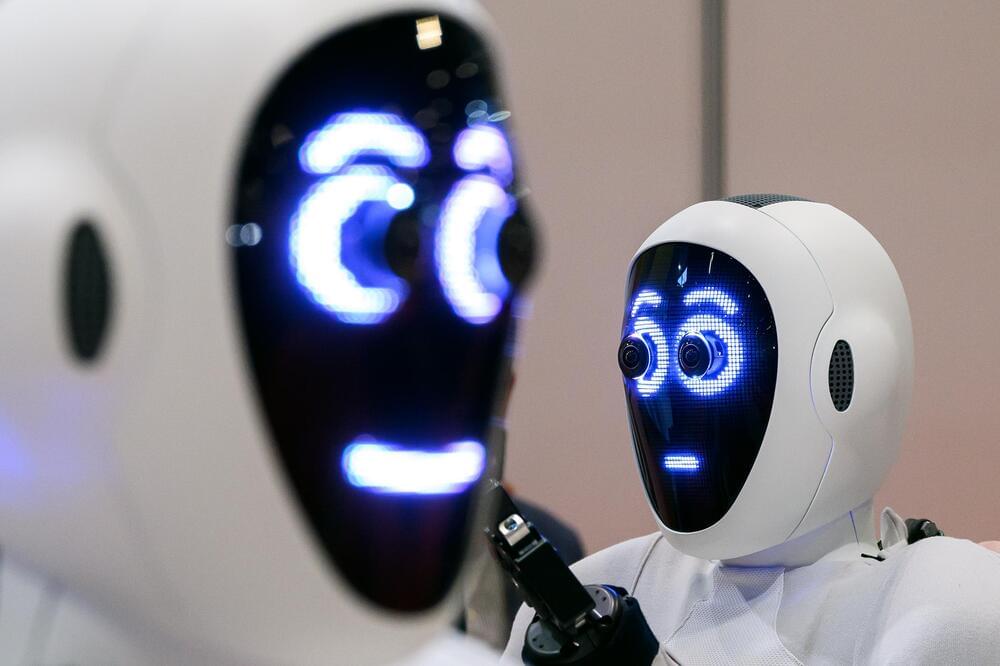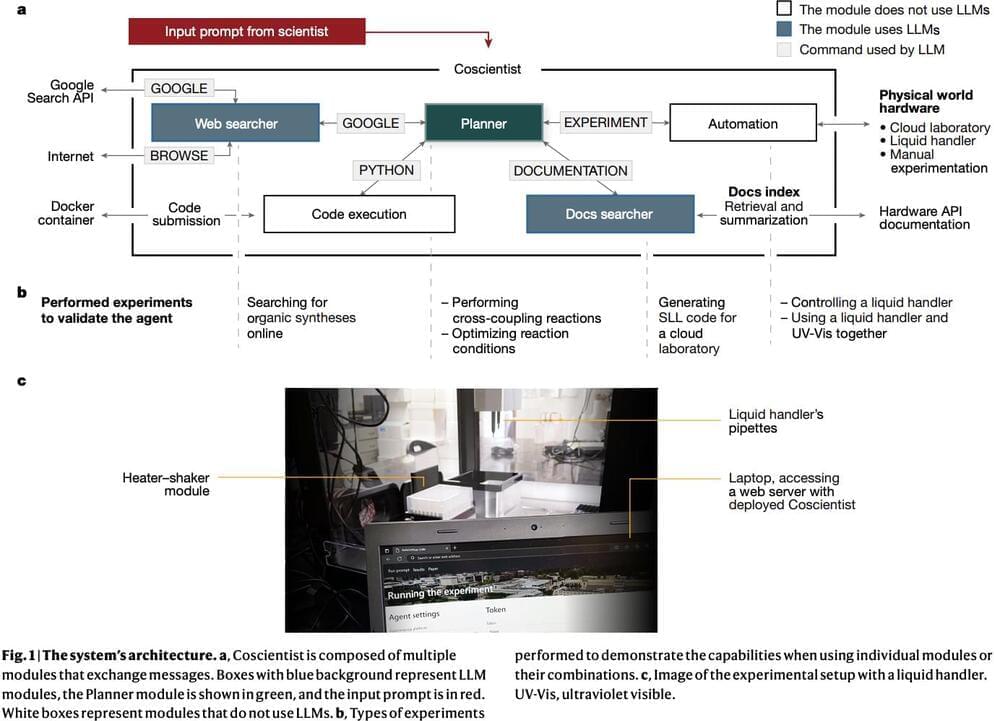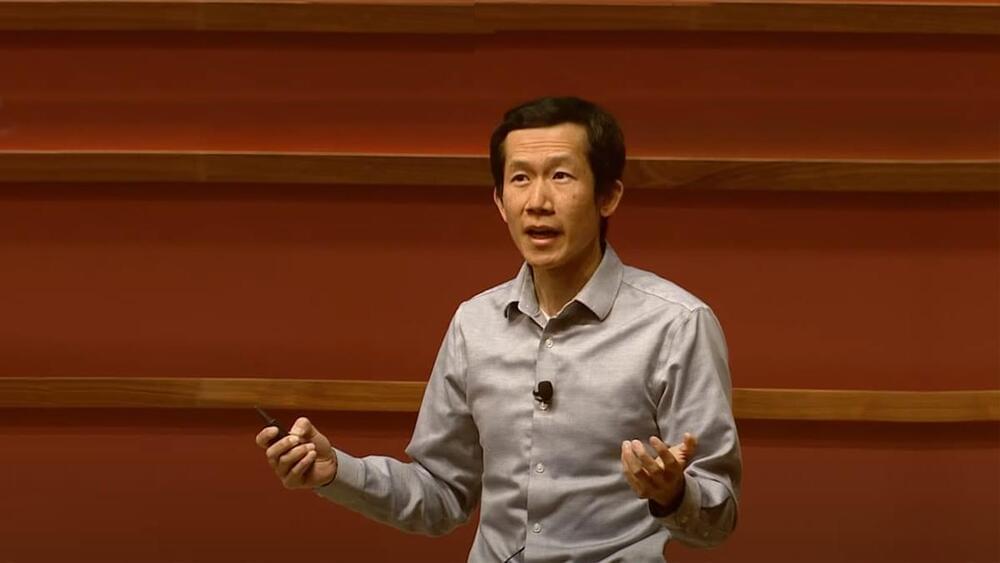Boston Dynamic’s legged robots won the internet by doing parkour and dancing to classic R&B. The company’s founder Marc Raibert now leads an institute trying to make the machines more independent.
Category: internet – Page 64

Why Nationalizing AI Is a Bad Idea
Here’s my new Opinion article for Newsweek on AI!
Like so many in America, I watch astounded as generative artificial intelligence (AI) evolved at lighting speed in 2023, performing tasks that seemed unimaginable just a few years ago. Just last month, a survey found that nearly 40 percent of more than 900 companies were planning to cut jobs in 2024 in part because of AI. If robotics takes a giant leap in the next 12 months, as some suspect, then the survey might end up being too conservative. Generative AI combined with humanoids, which many companies are racing to turn out, is a game changer. Construction jobs, physician jobs, police jobs, and many more will soon be at stake.
Clearly, capitalism is facing a crisis. For years, I have advocated for a Universal Basic Income (UBI), as a way to transition society into the AI age. My method was by leasing out the trillions of dollars worth of empty U.S. federal land to big business, and using some of the proceeds to pay for a basic income for every American. However, any method of a basic income will now help offset the loss of jobs AI will bring.
But recently, chatter about something else is being thrown around in internet chat rooms, in congressional halls, and in arguments at holiday dinner tables: nationalizing AI.
It’s a bad idea. For starters, I don’t want big government in the innovation business; it already has a hard enough time trying to keep people out of poverty. Right now, 1 in 5 kids in the U.S. is going to bed hungry or malnourished at night, and America’s homeless problem is the worst it’s been in my 50 year lifetime.
SpaceX launches the first set of Starlink satellites for T-Mobile’s direct-to-cell plan
The first satellites capable of providing direct-to-cellular service via SpaceX’s Starlink network and T-Mobile’s cellular network have been sent into orbit aboard a SpaceX Falcon 9 rocket.
Six of the cell-capable satellites were among a batch of 21 Starlink satellites launched from Vandenberg Space Force Base in California at 7:44 p.m. PT Tuesday. The satellites were deployed successfully, and the rocket’s first-stage booster made a routine landing on a drone ship in the Pacific Ocean.
SpaceX plans to launch hundreds of the upgraded satellites in the months ahead, with the aim of beginning satellite-enabled texting later this year. 4G LTE satellite connectivity for voice and data via unmodified mobile devices would follow in 2025, pending regulatory approval.

Nearly 11 million SSH servers vulnerable to new Terrapin attacks
Almost 11 million internet-exposed SSH servers are vulnerable to the Terrapin attack that threatens the integrity of some SSH connections.
The Terrapin attack targets the SSH protocol, affecting both clients and servers, and was developed by academic researchers from Ruhr University Bochum in Germany.
It manipulates sequence numbers during the handshake process to compromise the integrity of the SSH channel, particularly when specific encryption modes like ChaCha20-Poly1305 or CBC with Encrypt-then-MAC are used.

SpaceX sends 6 Starlink satellites up with Direct to Cell capability
While we recover from New Year festivities, SpaceX is already checking off things on its 2024 list. SpaceX recently shared photos on X stating that six Starlink satellites with Direct to Cell capability will be launched into orbit soon.
“SpaceX is leveraging its experience in manufacturing [and] launching the world’s most advanced rockets and spacecraft to deploy Starlink satellites with the Direct to Cell capability at scale,” notes SpaceX.
“Direct to Cell satellites will initially be launched on SpaceX’s Falcon 9 rocket and then Starship. On orbit, the satellites will immediately connect over laser backhaul to the Starlink constellation to provide global connectivity.”

Starlink chose Kenya for first office in Africa
Starlink may have launched its first African service in Nigeria, but it is choosing Kenya as the location of its first physical office on the continent.
SpaceX, parent company of the satellite internet company Starlink, recently posted a job vacancy for the position of Global Licencing Activation Manager, sub-Saharan Africa.
The successful candidate is expected to manage a portfolio of countries, interfacing internally and externally, to enable Starlink to become licenced as an Internet service provider and bring the country online, so it can serve people and enterprises around the world in the near future.

The Big Backlash Against AI-Generated Art, Explained
Generative AI has sparked a tremendous backlash across the internet, as the early promise of the technology has been overshadowed by the wide range of problems it has introduced.
It’s true that no artist was asked if their work could be used to train these models. But even if the courts rule in favor of the machines, the practical application of the technology doesn’t seem worth the cost.
Generative AI is incredibly energy-intensive, surprisingly labor-intensive, and requires constant input — annotation — from human workers to keep it functional, lest it spiral into hallucinogenic nonsense.
Using ChatGPT for a playful Q&A session consumes an absurd amount of water; exchanging a mere 20 questions with the text generator is akin to pouring a 500ml bottle of clean freshwater down the drain.


CMU and Emerald Cloud Lab Researchers Unveil Coscientist: An Artificial Intelligence System Powered by GPT-4 for Autonomous Experimental Design and Execution in Diverse Fields
Integrating large language models (LLMs) into various scientific domains has notably reshaped research methodologies. Among these advancements, an innovative system named Coscientist has emerged, as outlined in the paper “Autonomous chemical research with large language models,” authored by researchers from Carnegie Mellon University and Emerald Cloud Lab. This groundbreaking system, powered by multiple LLMs, is a pivotal achievement in the convergence of language models and laboratory automation technologies.
Coscientist comprises several intricately designed modules, with its cornerstone being the ‘Planner.’ This module operates using a GPT-4 chat completion instance, functioning as an interactive assistant capable of understanding user commands such as ‘GOOGLE,’ ‘PYTHON,’ ‘DOCUMENTATION,’ and ‘EXPERIMENT.’ Additionally, the ‘Web Searcher’ module, fueled by GPT-4, significantly enhances synthesis planning. Notably, it has exhibited exceptional performance in trials involving acetaminophen, aspirin, nitroaniline, and phenolphthalein. The ‘Code execution’ module, triggered by the ‘PYTHON’ command, facilitates experiment preparation calculations. Meanwhile, the ‘Automation’ command, guided by the ‘DOCUMENTATION’ module, implements experiment automation via APIs.
The prowess of the GPT-4-powered Web Searcher module in synthesis planning is evident in its success across diverse trials, demonstrating a capacity for efficient exploration and decision-making in chemical synthesis. Furthermore, the documentation search module equips Coscientist with the ability to utilize tailored technical documentation efficiently, enhancing its API utilization accuracy and improving overall experiment automation performance.

Percy Liang: Transparency for Foundation Models
Only a year ago, ChatGPT woke the world up to the power of foundation models. But this power is not about shiny, jaw-dropping demos. Foundation models will permeate every sector, every aspect of our lives, in much the same way that computing and the Internet transformed society in previous generations. Given the extent of this projected impact, we must ask not only what AI can do, but also how it is built. How is it governed? Who decides?
We don’t really know. This is because transparency in AI is on the decline. For much of the 2010s, openness was the default orientation: Researchers published papers, code, and datasets. In the last three years, transparency has waned. Very little is known publicly about the most advanced models (such as GPT-4, Gemini, and Claude): What data was used to train them? Who created this data and what were the labor practices? What values are these models aligned to? How are these models being used in practice? Without transparency, there is no accountability, and we have witnessed the problems that arise from the lack of transparency in previous generations of technologies such as social media.
To make assessments of transparency rigorous, the Center for Research on Foundation Models introduced the Foundation Model Transparency Index, which characterizes the transparency of foundation model developers. The good news is that many aspects of transparency (e.g., having proper documentation) are achievable and aligned with the incentives of companies. In 2024, maybe we can start to reverse the trend.